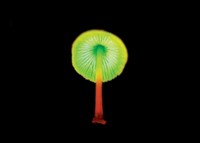Advertisement
Grab your lab coat. Let's get started
Welcome!
Welcome!
Create an account below to get 6 C&EN articles per month, receive newsletters and more - all free.
It seems this is your first time logging in online. Please enter the following information to continue.
As an ACS member you automatically get access to this site. All we need is few more details to create your reading experience.
Not you? Sign in with a different account.
Not you? Sign in with a different account.
ERROR 1
ERROR 1
ERROR 2
ERROR 2
ERROR 2
ERROR 2
ERROR 2
Password and Confirm password must match.
If you have an ACS member number, please enter it here so we can link this account to your membership. (optional)
ERROR 2
ACS values your privacy. By submitting your information, you are gaining access to C&EN and subscribing to our weekly newsletter. We use the information you provide to make your reading experience better, and we will never sell your data to third party members.
Environment
Fungus Degrades Lignin In Bug Guts
Harnessing enzymes could lead to improved conversion of biomass into fuels
by Rachel Petkewich
September 4, 2008

In the gut of a beetle lies a fungus that helps the insect digest lignin, researchers have found (Proc. Natl. Acad. Sci. USA 2008, 105, 12932). The discovery could lead to more efficient and milder ways to convert plants into biofuels.
Lignin is a natural aromatic polymer that protects a plant's sugar-containing cellulose and hemicellulose from most microbial attacks. It also vexes biofuel researchers who want easy access to the sugars.
Ming Tien, a professor of biochemistry and molecular biology at Pennsylvania State University, and colleagues fed wood to the Asian longhorned beetle, which can bore into live trees, and the Pacific dampwood termite, which usually eats only dead wood.
Analysis of the insects' feces by thermochemolysis using tetramethylammonium hydroxide demonstrated that lignin had undergone propyl side-chain oxidation and demethylation in both species. For the termite, the researchers also observed aromatic ring hydroxylation.
Tien and colleagues identified the fungus in the beetle's gut, but they have not yet found it in the termite's gut. They also found that chemical changes following lignin degradation in the beetle are similar to the changes observed in previously reported studies on lignin degradation by white-rot fungus. The researchers suggest that enzymes produced by a consortium of fungi and bacteria are likely responsible for overall lignin degradation by the insects.




Join the conversation
Contact the reporter
Submit a Letter to the Editor for publication
Engage with us on Twitter